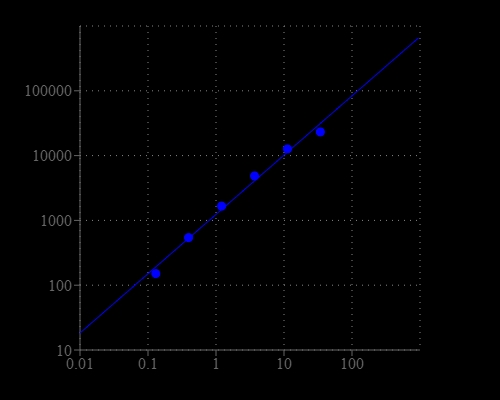Amplite® Fluorimetric Acetylcholinesterase Assay Kit
Red Fluorescence
Acetylcholinesterase, also known as AChE, is an enzyme that degrades (through its hydrolytic activity) the neurotransmitter acetylcholine, producing choline and an acetate group. It is mainly found at neuromuscular junctions and cholinergic synapses in the central nervous system, where its activity serves to terminate synaptic transmission. AChE has a very high catalytic activity- each molecule of AChE degrades about 5000 molecules of acetylcholine per second. Acetylcholinesterase is also found on the red blood cell membranes, where it constitutes the Yt blood group antigen. Acetylcholinesterase exists in multiple molecular forms, which possess similar catalytic properties, but differ in their oligomeric assembly and mode of attachment to the cell surface. This Amplite® Fluorimetric Acetylcholinesterase Assay Kit provides one of the most sensitive methods for the detecting AChE activity. The kit uses Amplite® Red to quantify the choline produced from the hydrolysis of acetylcholine by AChE through choline oxidase-mediated enzyme coupling reactions. The fluorescence intensity of Amplite® Red™ is proportional to the formation of choline, thus the AChE activity.


| Catalog | Size | Price | Quantity |
|---|---|---|---|
| 11402 | 200 Tests | Price |
Spectral properties
| Excitation (nm) | 571 |
| Emission (nm) | 584 |
Storage, safety and handling
| H-phrase | H303, H313, H333 |
| Hazard symbol | XN |
| Intended use | Research Use Only (RUO) |
| R-phrase | R20, R21, R22 |
| UNSPSC | 12171501 |
Instrument settings
| Fluorescence microplate reader | |
| Excitation | 540 nm |
| Emission | 590 nm |
| Cutoff | 570 nm |
| Recommended plate | Solid black |
Contact us
| Telephone | |
| Fax | |
| sales@aatbio.com | |
| International | See distributors |
| Bulk request | Inquire |
| Custom size | Inquire |
| Technical Support | Contact us |
| Request quotation | Request |
| Purchase order | Send to sales@aatbio.com |
| Shipping | Standard overnight for United States, inquire for international |
Page updated on December 13, 2025

